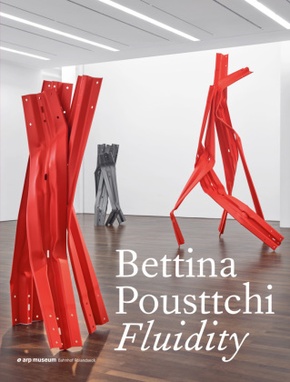| Verlag | Distanz Verlag |
| Auflage | 2022 |
| Seiten | 96 |
| Format | 24,1 x 1,0 x 31,2 cm |
| Großformatiges Paperback. Klappenbroschur | |
| Gewicht | 688 g |
| ISBN-10 | 3954765012 |
| ISBN-13 | 9783954765010 |
| Bestell-Nr | 95476501A |
Dynamische Umformungen
Angetrieben von ihrem Interesse an urbanen Architekturen und deren jeweils ortsspezifischen Bedingungen und Besonderheiten richtet Bettina Pousttchi (geb. 1971 in Mainz; lebt und arbeitet in Berlin) mit ihren Skulpturen den Blick auf Stadtmobiliar wie Fahrradständer, Absperrgitter, Baumschutzbügel, Leitplanken oder Straßenpfosten. Aus den industriell gefertigten und funktionalen Stahlelementen schafft die Künstlerin neue, dynamische Formkonstellationen, nach einem
von ihr vorgegebenen, mechanisch gelenkten Umgestaltungsprozess, der nur bedingt kontrollierbar ist. Im Museum werden diese Stadtmöbel ähnlich wie einst Duchamps Readymades - zu eigenständigen Kunstwerken, die wenig mit ihrer ursprünglichen Funktion gemein haben. Leitplanken geben keine Grenzen mehr vor, sondern fordern die Betrachter_innen zu einem tänzerischen Parcours durch den Ausstellungsraum auf.
Die Publikation Fluidity erscheint im Rahmen von Pousttchis gleichnamiger A usstellung, die den Auftakt für das Themenjahr "Wegweiserinnen" (2022) im Arp Museum Bahnhof Rolandseck bildet. Der Katalog zeigt 36 herausragende Skulpturen, Reliefs, Keramiken und Fotografien, die in den letzten zehn Jahren entstanden sind. Den Essay schrieb Jutta Mattern. Mit einem Vorwort von Petra Spielmann.
Dynamic Reformulations
Driven by an interest in urban architectures as well as the specific conditions and peculiarities of their sites, Bettina Pousttchi's (b. Mainz, 1971; lives and works in Berlin) sculptures focus our gaze on urban furniture like bicycle racks, crowd barriers, tree guards, guard rails, and street posts. The artist creates new, dynamic constellations of forms from the industrially manufactured functional steel elements according to a mechanically controlled transformation process which she specifies, although it can only be controlled to a certain extent. Much like Duchamp's readymades of yore, these pieces of street furniture b ecome autonomous works of art in the museum, which have little in common with their original function. Guard rails no longer define boundaries, but invite the viewer to take a dance-like path through the exhibition space.
Fluidity is published in the context of Pousttchi's eponymous exhibition, which kicks off the theme year "Wegweiserinnen" (2022) at the Arp Museum Bahnhof Rolandseck. The catalogue features 36 outstanding sculptures, reliefs, ceramics and photo- graphs created over the past ten years. The essay is written by Jutta Mattern, with a foreword by Petra Spielmann.

